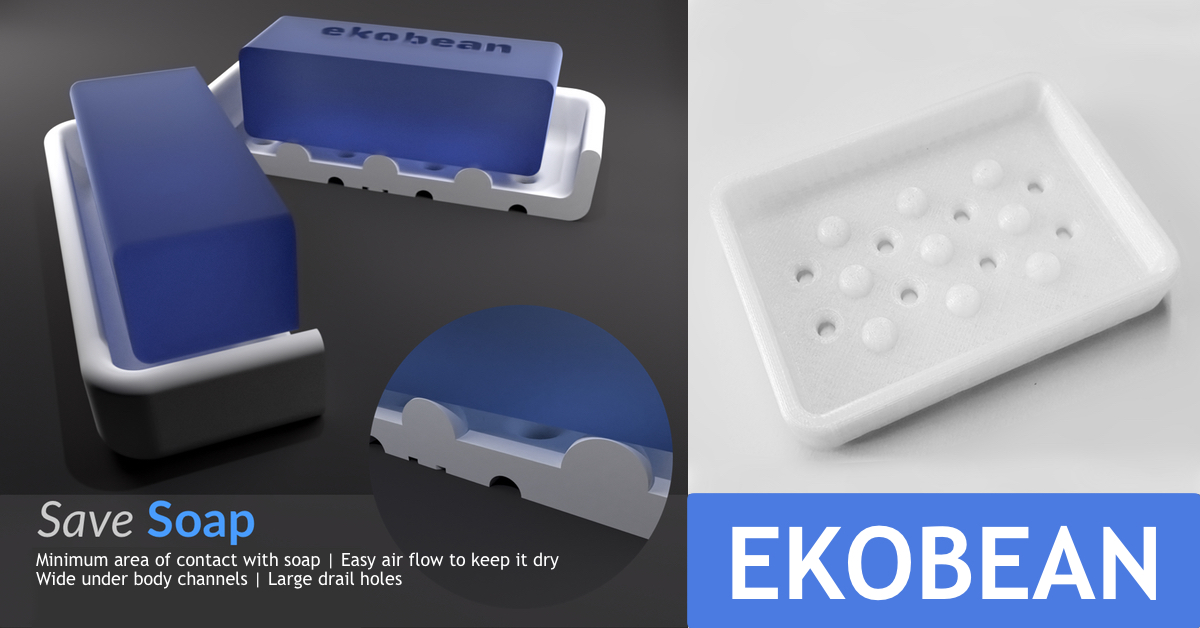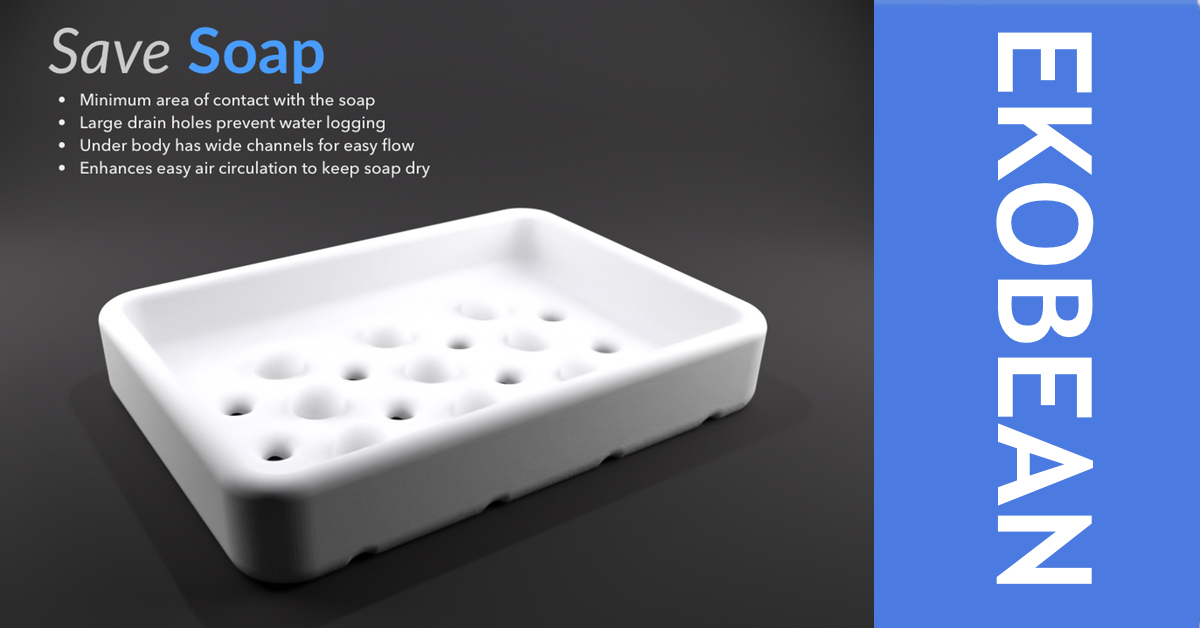
3D Printed ECO Friendly Soap Tray
This is a soap lover’s dream come true. The 3D printed glow in the dark soap saver has it all. Soaps are becoming increasingly expensive and need special trays to save its aroma, freshness and shape. On an average 10-30% of the soap, we use melt away in conventional trays. We have designed one that saves a major portion of what would otherwise just wash away. You recover the money spent on the tray in just a few weeks and save even more in every wash, with the added advantage of using a well-preserved soap. The raw material we use is PLA an eco-friendly material much similar to wood.
- A minimum area of contact with the soap
- Large drain holes prevent water-logging
- The underbody has wide channels for easy flow
- Enhances easy air circulation from underneath the soap keeping it dry
- Glow in the dark gives illumination in the dark
- Made with PLA an ECO-friendly & bio-degradable plastic
BUY NOW
About PLA:
The raw material we use, PLA or polylactic acid is a biodegradable and bioactive thermoplastic aliphatic polyester derived from renewable resources, such as cornstarch (in the United States and Canada), cassava roots, chips or starch (mostly in Asia), or sugarcane (in the rest of the world).
Even though there are cheaper plastics available we used this as our raw material owing to our commitment to going green where ever possible. PLA can be in a way considered the modern-day equivalent of wood. Humans have used wood for centuries since it is eco-friendly and biodegradable. We at EKOBEAN plan to come out with many more such innovative products that help in our daily life using such innovative and socially responsible products.
FAQ
Here are some frequently asked questions.
How did you come up with this thought?
We have all faced various issues with soap trays. When we buy one to solve a specific problem, another comes up. Our idea was to put all the problems in one basket and look at ways of solving them as much as possible.
Why does the soap melt so fast in some other trays?
The answer is water. Soap after use should dry as soon as possible, the faster the better. Multiple aspects lead to efficiently removing the water content. Two main factors are interfacial tension and air flow. Interfacial tension keeps the water locked in between the lower part of the soap and the surface it touches in the tray. Addressing airflow is not done in the conventional products. We could address both these aspects making an efficient soap saver.
Could you elaborate on the effects of interfacial tension and air flow?
Interfacial tension keeps the water underneath the soap for longer periods. Since the soap absorbs the water the lower layer expands making it softer and more prone to wastage. An interesting observation is that when one takes the soap out, the surface that touches the skin is this same softened surface. By the end of a wash, the entire thickness of this surface is washed away leading to a large portion of the bar being wasted in every use.
Air flow is what can quickly dry the soap. We all know that water evaporates faster when exposed to a channel of air. If we facilitate a proper ventilation mechanism for the air to flow freely over the surface of the soap, it speeds up the drying process.
How have you addressed these?
To take care of the interfacial tension we have reduced the contact area to a bare minimum. We have used spherical surfaces as supports that keep the soap elevated with minimum contact, this we find is much more efficient than the conventional flat supports.
As for the air flow, we have done multiple design enhancements to create a constant micro-flow of air starting from under the tray over the surface of the soap and up. To achieve this, we have increased the air gap under the soap, created multiple free flow channels under the tray to duct the air into the tray and also created a vortex region between the sides of the soap and the inner wall of the tray. When the water evaporates from the soap, the partial pressure drop created in the lower region sucks in more air from underneath creating a natural flow until the soap is dry.
Why do you have curved side walls?
This is for two reasons, one for strength and the other for functionality. You would have noticed that there are no sharp edges. We often keep the soap back in the tray without paying much attention. While taking bath our skin softens and is extra sensitive. When one keeps the soap back there is a high probability of the skin above the fingernails to rub against or hit the wall of the tray. If the edge is sharp, this might hurt. The thick construction also helps protect the soap tray against minor drops and bumps.
Why did you add the glow to the material?
This is specifically to address accidental power failure. In case of power failure, the ‘soap saver’ will produce a dim illumination in the room to continue one’s bath. It will also aid in locating switches, taps, racks, dresses & doorknobs. This is especially handy when one is travelling and is in an unfamiliar powder room/washroom at night. Plus, kids love the glow and there are customers who bought it for that reason.
What about draining the water?
There are large holes which act like funnels connected to the underbody channels. These serve two purposes one to channel any water that might flow down and two for facilitating air flow. From our experience we rarely see much water dripping out from the tray as most of the water just evaporates away.
Any thoughts on the design?
We wanted a design that would blend in wherever it was put. Didn’t want it to stand out like a sore thumb. This design we believe will complement the environment in a very subtle way blending in nicely with its surroundings.
How long have you tested the Soap Saver?
We came out with our first prototype in early 2015. We tested it for two years and kept refining it until we found a design we could stick to. We initially gave it to a few beta testers and gathered their feedback and made design changes accordingly. A great deal of thought went into a design that would accommodate soaps of all the common sizes. Small or large the soap had to balance well inside the tray and stay elevated.




